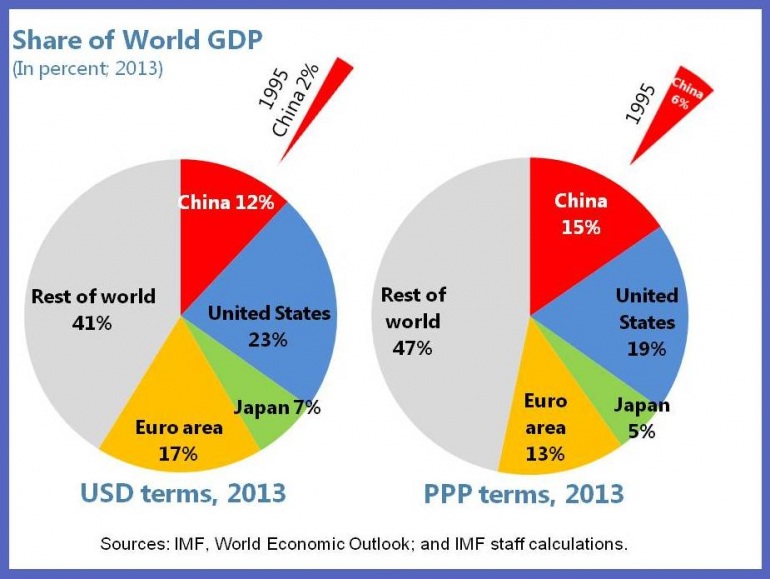When it comes to China, size matters

Morning commuters swarm through a major subway interchange station in downtown Shanghai, China on 15 July 2009. AAP/EPA/QILAI SHEN
Mongolia’s economy grew nearly 12 per cent last year, the United States around 2 per cent. So Mongolia grew around 6 times faster than the United States, yet of course the United States contributed more to GDP growth -- over 150 times more. Why? Because size matters.
Let’s apply this logic to China. A bigger but somewhat slower growing China of the future will contribute about as much to global demand as the smaller but faster growing China of before. This is arithmetic: An economy that is twice as big can grow by half as much and contribute the same to global demand. By the way, China today is more than twice as big as it was a decade ago.
So, the good news is, even with slower growth, China will continue to be an engine of global output. Indeed, an even bigger engine than before.
How big is China?
Big. China is the world’s second largest economy. Based on PPP exchange rates, China increased from 6 per cent of global output in 1995, to 15 per cent last year (see chart). Or, if you prefer using market exchange rates, the corresponding rise in China’s share of global GDP is from 2 per cent in 1995 to 12 per cent in 2013.

When will China surpass the US? In 2018, based on PPP exchange rates. Later using market exchange rates -- by 2019, the last year of our projections, China’s economy would be equivalent to about 64 per cent of US GDP.
China is big but not rich
China is the world’s most populous country. So per person, GDP in China is US$6500, compared to US$53,100 in the US (see chart). Even the most developed cities in China do not approach the income levels of advanced economies. This underscores that China still has considerable room to grow. Indeed, as the IMF’s Managing Director noted in her recent address at the China Development Forum, China has its eyes fixed firmly on its next destination -- aiming for “higher quality, more inclusive, and more sustainable” growth.

Size matters…contribution to global demand
The chart shows how much China is contributing to global growth. In 2003-7, China averaged 11.7 per cent growth whereas in the coming five years (2015-19) we expect growth to average ‘only’ 6.8 per cent. Yet, because China’s economy is much bigger, the average contribution to global growth will actually increase slightly -- rising from 1.0 (2003-7) to 1.1 (2015-19) percentage points.
Size matters. Thus, we forecast China to contribute more than before to global output, even though growth is slowing. For exporters, this means China’s expanding market will continue to be a great source of future customers.

And, in the end, the world economy benefits the most from sustainable growth in China. As argued before, the world should welcome the slowdown in China to a more sustainable growth rate. Welcome, because it means much higher income in the future. And, as shown above, it means that China will continue to be an engine of global growth.
Steven Barnett is a Division Chief in the Asia and Pacific Department of the International Monetary Fund (IMF).
This article first appeared on iMFdirect. Republished with permission.
















